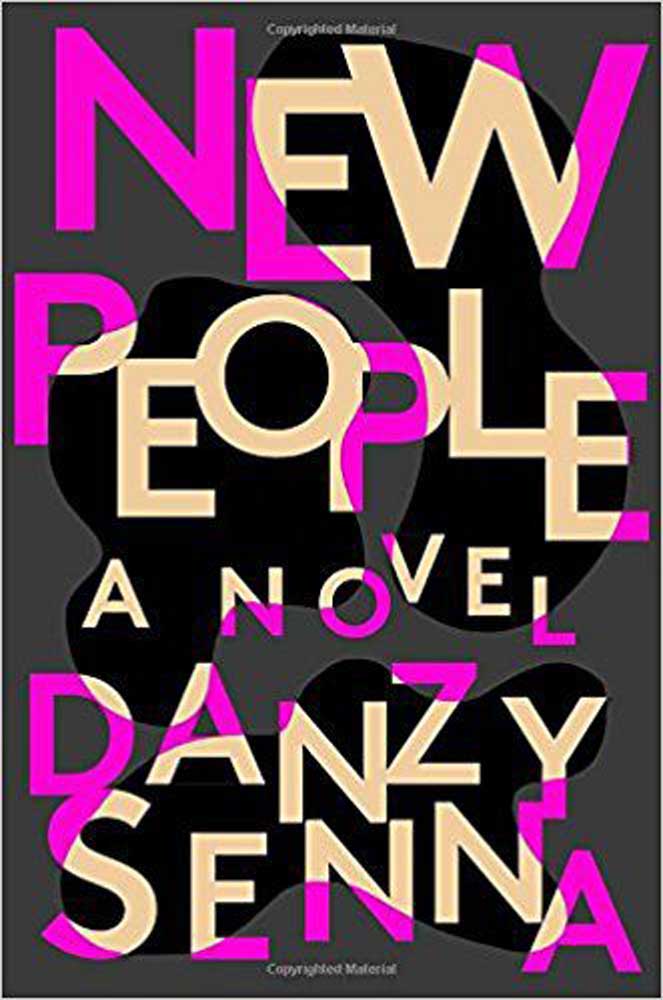‘New People’ riffs on race and love, with a twist
Published 4:43 pm Monday, August 21, 2017

- "New People"
“New People” by Danzy Senna
(229 pages, Riverhead Books, $26)
“True multiculturalism,” novelist Danzy Senna’s father once told her, “flourishes in only four places: drug dens, casinos, the military — and last but not least, houses of God.”
Tellingly, he didn’t include families on the list.
Senna was the product of the disastrous marriage between two writers, white poet Fanny Howe and black editor and scholar Carl Senna. Theirs was called “the ugliest divorce in Boston’s history,” Senna recalled in her 2009 memoir, “Where Did You Sleep Last Night?” It haunts her — the fracturing of both her family and their Civil Rights-era conviction that individuals might trump history.
She revisited their rift in her first novel, “Caucasia” (1998), and in every book of hers since, to explore what happens when races and cultures mingle in the home — and under the skin. She keeps returning to the lives of mixed-race people: the scrutiny they face, the fascination, congratulation, suspicion and scorn.
Her new novel, the sinister and charming “New People,” riffs on the themes she’s made her own — with a twist. It’s a novel that reads us. It anticipates, and sidesteps, lazy reading and sentimental expectations.
In interviews, Senna has spoken with some weariness of the pressure to create positive depictions of mixed-race characters, to educate, to uplift. It’s a deep pleasure to see her shrug off such strictures and lavish her attention on the petty, the creepy and the galloping mad. And far from subverting the trope of the “tragic mulatto,” Senna toys with it. In classic form, the book follows a light-skinned woman, Maria, “a one-dropper,” and her love triangle (of sorts) with two men who have some salient complexions of their own.
The material is hot but the style stays cool, as calm and impersonal as a hotel room. The tone is starched; each tight, tidy sentence has hospital corners.
“Maria is 27,” Senna writes near the start. “She is engaged to marry Khalil, who loves her unequivocally. She is the one he has been waiting for his whole life. Maria loves Khalil. She never doubts this. He is the one she needs, the one who can repair her.”
Run, Khalil. There is crookedness in Maria. She knows it, her mother knows it. (“A strange baby,” her mother observed in a diary. “She’s perfectly cheerful, but I sense coldness.”) And softhearted, softheaded Khalil, we fear, will get to appreciate its full measure. He’s already had a taste. For kicks, Maria once disguised her voice and left him a voicemail message threatening to lynch him: “We’re gonna string you up by a dreadlock, man, and light you on fire.”
The couple met at Stanford in the late 1980s. They were both biracial and “the same shade of beige.” It was a symbolic union, a chance to wash away any ambiguity and be reborn into simple, straightforward blackness. They move to Brooklyn and get engaged. Khalil’s dreams are suddenly in reach — “a tribe of children and a brownstone and a big hairy dog named Thurgood” — but Maria is slipping from his grasp. She’s meant to be working on a dissertation, about the Jonestown massacre, but spends more time fantasizing about — and stalking — a friend of Khalil’s, a poet.
Senna’s aim is precise and devastating. She conjures up ’90s-era campus politics with pitiless accuracy: the white students wearing “Recovering Racist” pins; the black girls hacking off their “’colonized’ hair”; the empty gestures and the beautiful gestures — the shrillness, to be sure, but the sweetness too.
These are, admittedly, easy targets, but Senna lampoons the worlds she knows, the people she’s been. This amused self-implication supplies her caricatures with their damning details but keeps them from feeling cruel.
These sections sing. They are so fluent, and seem to have been so much fun to write, that other strands of the story suffer neglect by comparison. Plot points and characters that seem significant are allowed to wither on the vine: a supernatural element; a documentary on racially ambiguous couples called “New People” that follows Khalil and Maria; a white ex-boyfriend of Maria who suddenly starts styling himself as a queer, Latino activist.
It’s “strange to wake up and realize you’re in style,” Senna wrote in a 1989 essay called “The Mulatto Millennium.” No more the delicate, doomed “half-castes” of 19th-century novels like “Clotel” — “hybridity is in.” And this year, the 50th anniversary of Loving v. Virginia, which struck down laws against interracial marriage, it dominates.
In “Caucasia,” two biracial sisters create a dialect of their own, and with it, a bespoke universe apart from a world intent on defining them. They find liberation, for a time, in language, in self-definition. There is no easy consolation in “New People.” But in its insistence on being read on its own terms, its commitment to complexity, it does something better than describe freedom. It enacts it.






